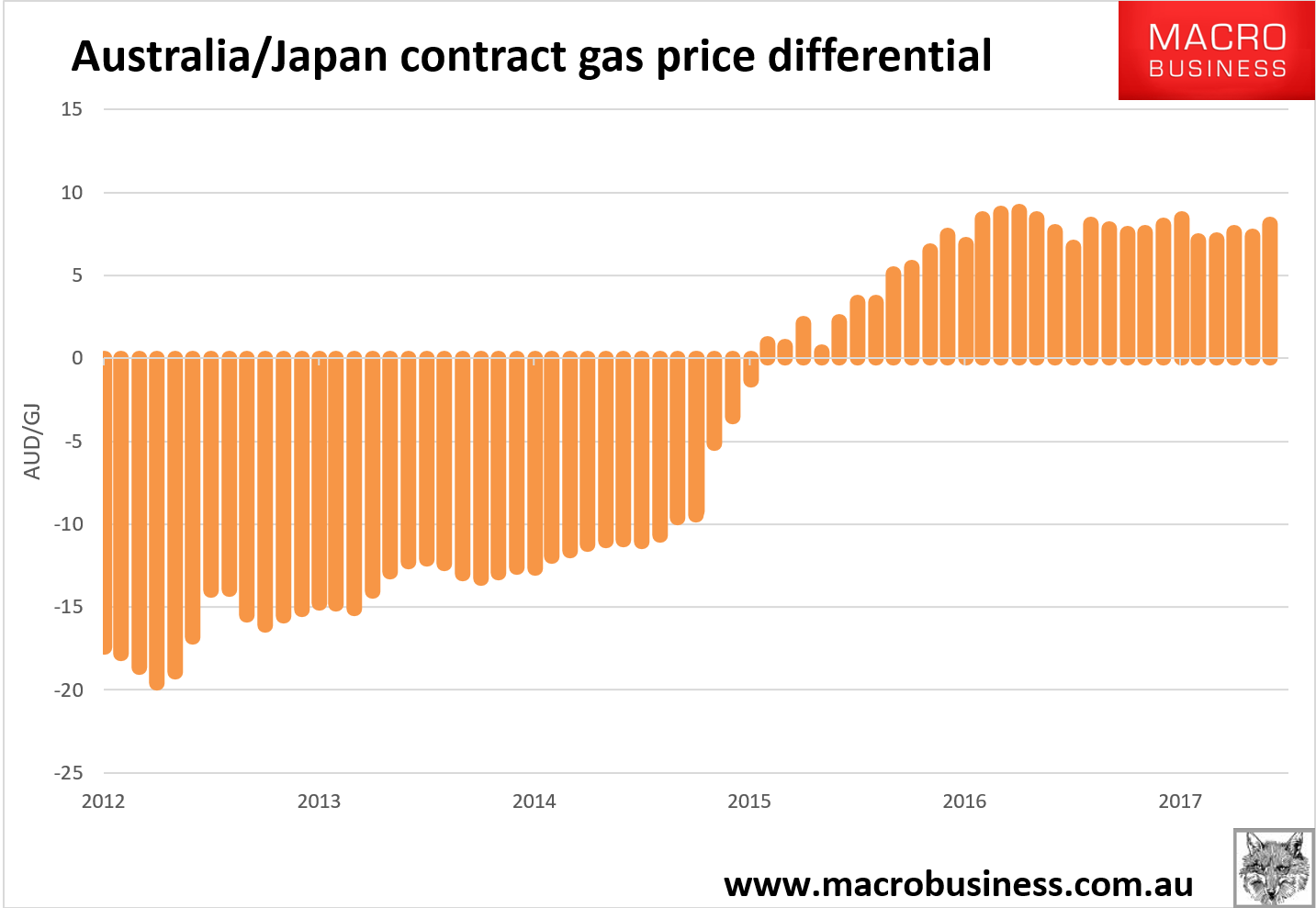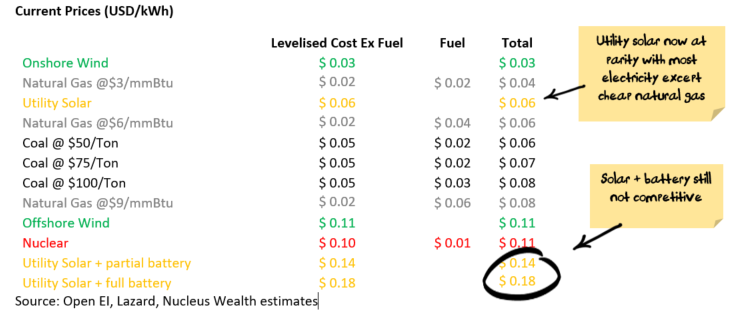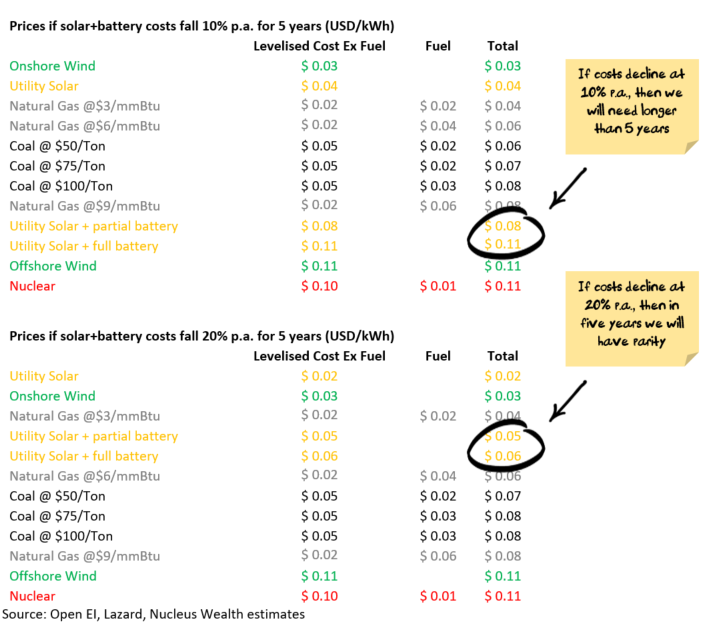Judith Sloan lost it on energy over the weekend:
Move over, Ponzi; forget Bernie Madoff; ignore Enron; and dismiss collateralised debt obligations associated with subprime mortgages. Without a doubt, the biggest scam perpetrated against taxpayers and consumers is renewable energy.
And if you think this scam is just an Australian phenomenon, think again. With very few exceptions, governments all over the world have fallen into the trap of paying renewable energy scammers on the basis that it is necessary, at least politically, to be seen to be doing something about climate change.
But let’s take the Australian figures as an example of the vast sums of moneys being redistributed from ordinary consumers and taxpayers to the renewable energy rent-seekers. It is estimated that more than $2 billion a year is handed over to renewable energy operators by virtue of the operation of the renewable energy target and the associated renewable energy certificates.
But this is just the start. The Australian Renewable Energy Agency shovels out hundreds of millions of dollars annually to subsidise renewable energy companies, many of which are overseas-owned. Then there is the Clean Energy Finance Corporation, which was given $10bn in equity by the Gillard Labor government to lend or grant money to renewable energy companies. Evidently the long-suffering taxpayer might receive a return on this “investment”, but I wouldn’t suggest you hold your breath.
Then we have the actions of deluded state governments and their absurd renewable energy targets. Using the dubious technique of reverse auctions, state governments are effectively providing guaranteed cashflows to renewable energy companies for intermittent power using taxpayers’ money. Think Victorian and the ACT here, but Queensland is about to get in on the act.
It would be a worthwhile exercise to add up the value of all these subsidies, grants, concessional loans, guarantees and the like so we can get an appreciation of the size of the scam. There is no doubt the aggregate amount dwarfs any other government industry assistance aid, including for the now defunct automotive industry.
There is at least one, Judith. The subsidy of free carbon pollution when science is telling us it will end life on the planet.
I’ll remind readers once more that our Janet is a former director of Santos, the key firm in the east coast gas cartel. Whether Janet believes her own anti-science pap, it appears she’d sure rather renewables were blamed for east coast power prices than the real culprit, gas and especially Santos.
Of course, I’d rather we had a carbon price than our mess of renewable schemes too, it would certainly be cheaper, but our Judith hates that idea as well.
Also from the gas cartel today comes Shell:
Shell’s most senior representative in Australia will use her first public address here to attack false claims around east coast gas supply and prices and voice worries about the return of protectionist voices in the gas debate.
Zoe Yujnovich, who took over as Shell Australia chair in April, will tell The Australian Financial Review National Energy Summit on Monday that blaming Queensland’s LNG industry alone for the problems with gas supply and prices on the east coast is “a selective and intentionally misleading” reading of the situation.
Ms Yujnovich says the “myth” that exported gas is cheaper than gas sold locally has been manufactured by detractors of the industry to erode trust around pricing and diminish public support for an export sector.
“Allow me to be absolutely clear on this point – Australian gas is never cheaper for manufacturers in Japan than it is for Australian factories,” she says.
“To suggest otherwise is a classic example of a disingenuous comparison, or shenanigan, designed to diminish public support for an export industry.”
Here’s the chart, you decide:

Over at the AFR there is some better material:
The Turnbull government is at war over proposed Clean Energy Target but the rapidly falling cost of wind and solar energy could mean developers can do without such targets and their rich subsidies as soon as the early 2020s.
Contrary to former PM Tony Abbott, who argues that pushing renewable energy onto the grid under the Renewable Energy Target (RET) has made power costly and unreliable, rapidly falling prices may now mean that building more wind and solar is the key to bringing wholesale electricity prices down.
That offers the tantalising prospect that Australia can meet the energy “trilemma” – restoring affordable and reliable energy and meeting the nation’s commitments to reduce greenhouse gas emissions – with a mix of wind, solar, gas, storage and “demand response”. Demand response offers customers incentives to curb their demand and send energy from solar panels, batteries and smart appliances when demand spokes, helping to avoid blackouts.
AGL Energy has outlined such a future in its plan to replace the ageing Liddell coal power station in the NSW Hunter Valley. But Prime Minister Malcolm Turnbull remains unconvinced and deputy PM Barnaby Joyce is openly hostile.
Well, that surely means it’s great idea. Should we listen to a guy that can’t correctly fill in the application form to become an MP on a subject as complex as energy? Moreover, on our modelling the outcomes are actually much better than this. Wind power is already cheaper than coal ex-subsidy:

It will be wind+battery that will be cheaper than coal by the early 2020s:

This is why fossil-fuel apologists are now reaching for the subsidy switch themselves. They are on the verge of market forces extinction.
That is not to say that fossil fuel base load will not be needed for some considerable time during the transition. Via the AFR:
Businesses are maintaining pressure on the federal government to adopt the clean energy target recommended in the Finkel Review after news last week that China planned to introduce an emissions-trading scheme highlighted gathering momentum on climate change policy.
Amid continuing deadlock in the Coalition over the CET and moves to favour dispatchable power over green energy, business said it needed settled energy and climate policy to drive investment that would add generation and bring down soaring electricity prices.
China plans to introduce a carbon emissions-trading scheme by the end of this year, following the long-established scheme in Europe, in a move that is expected to put pressure on Australia’s coal exports.
Businesses said they were considering the implications of the scheme, which puts a price on carbon and acts to discourage more polluting forms of energy such as coal in favour of lower-emission fuels such as gas and renewable power.
Business Council of Australia chief executive Jennifer Westacott said the nation did not need to make a choice between cleaner energy and dispatchable generation. “We will continue to need a mix of generation technologies that will ensure we get affordability and sustainability right,” Ms Westacott told The Australian.
Quite right. But the Government now has the wrong end of this stick as well:
The Turnbull government is rethinking the need to adopt a clean energy target, believing the rapidly falling cost of renewable energy means there may no longer be a requirement for subsidies.
In the keynote address to The Australian Financial Review National Energy Summit, federal Energy Minister Josh Frydenberg will highlight the falling costs of wind and solar energy, including battery storage capacity, as he stresses emissions reduction cannot come at the expense of reliability and affordability.
“It is challenging but possible to simultaneously put downward pressure on prices and enhance the reliability of the system, while meeting our international emissions reductions targets,” he will say at the start of the two-day summit that begins on Monday.
This is pure politics, as usual. A CET is still needed if we’re going to transition as swiftly as possible to renewable plus storage, as the above numbers suggest. How come it needed a CET last week and not this one? It’s classic Do-nothing Malcolm.
Labor is making much more sense, via The Guardian:
The Labor leader Bill Shorten has called for significant changes to the rules governing the national electricity market, saying they are biased in favour of big energy generators to the detriment of households.
He said the national electricity market (NEM) rules are designed to help the big companies recoup the money they spent on purchasing government assets, rather than encourage households to generate their own power, and they need to change faster to adapt to consumer needs.
His comments hint at a possible overhaul of the NEM’s governance structure under a future Labor government, because the current rule-making process is too cumbersome and slow, with suggested rules changes taking years to be introduced.
Labor had promoted a similar idea in the lead-up to the 2016 election, with its call for an electricity modernisation review, but now the Finkel review has been released it would be used to guide such a review.
In a speech to the Australian Financial Review’s National Energy Summit in Sydney on Monday, Shorten will recommit Labor to negotiating a “fair-dinkum” clean energy target with the Turnbull government, saying “it’s time to put away the weapons of the climate change wars” and work together to find a way forward.
Good policy. The solution is in part decentralisation. But Labor is still going to have to address gas or power prices will not fall and on that front it is so far silent.

